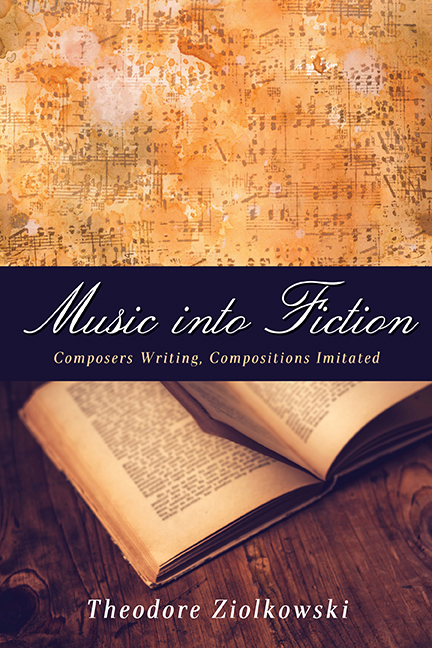7 - Specific Compositions
from Second Movement: Compositions Imitated
Published online by Cambridge University Press: 09 May 2017
Summary
A Variety of Fictionalizations
Paradoxically, in one of the earliest and best-known literary works bearing the title of a famous composition the music plays virtually no role. In Leo Tolstoy's novella The Kreutzer Sonata (1889) Beethoven's sonata is mentioned in only one (chap. 23) of the twenty-eight short chapters, roughly three-quarters of the way through the narrative. The work is not so much a fictional novella as it is a moral treatise against sexual intercourse, motivated by the author's life-changing religious conversion, and a profound exploration of jealousy inspired by the passions of love and hatred. It might even be said that the action, which begins only when the narrative is well underway, is introduced simply to exemplify the Tolstoy's principal interest: the social and moral argument.
On a lengthy train journey the unnamed narrator listens to the account of his distraught fellow passenger, Pozdnyshev, who has recently been acquitted of the murder of his wife for her alleged adultery. Returning unexpectedly from a business trip, he found her at home, dining with a family friend, Trukhashevsky, a handsome bachelor and an accomplished violinist. Moved by his growing jealousy, in a fit of rage he stabbed her to death. Trukhashevsky and the wife, a pianist, who had for some time been practicing together, had agreed to perform at a musical Sunday evening for their friends. They were trying to decide whether to undertake “something difficult and classical, such as a Beethoven violin sonata, or some easy trifles” (55), when Pozdnyshev became consumed by jealousy, convinced that they were plotting to deceive him.
On the evening of the dinner they performed Beethoven's Violin Sonata in A Minor (op. 47, no. 9): the so-called “Kreutzer Sonata.” (It is interesting, though irrelevant, that the sonata's popular designation was also prompted by a dispute over a woman: when the violinist George Polgreen Bridgetower, who first performed the work and to whom it was originally dedicated, made disparaging remarks about a woman Beethoven admired, the composer tore up the inscription and rededicated it to the renowned violinist Rodolphe Kreutzer, who never performed the work in public.)
- Type
- Chapter
- Information
- Music into FictionComposers Writing, Compositions Imitated, pp. 173 - 196Publisher: Boydell & BrewerPrint publication year: 2017



